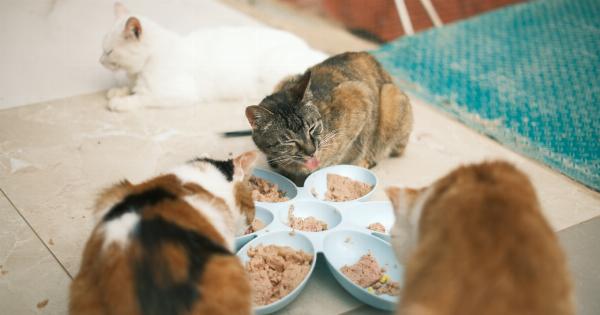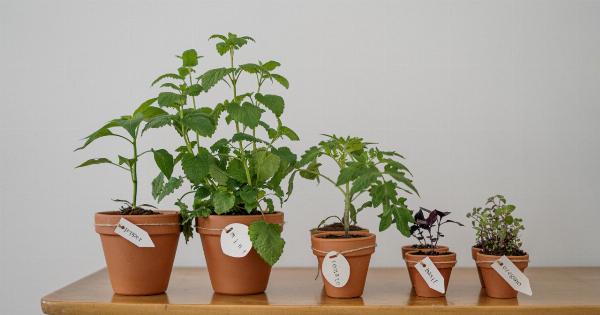Food intolerance is a common health issue that affects many pets. It occurs when your pet’s digestive system is unable to properly process certain types of food, leading to unpleasant and sometimes severe symptoms.
Identifying the underlying cause of your pet’s food intolerance is crucial for their overall well-being. This article will explore the possible reasons behind your pet’s food intolerance and provide insight into how you can manage this condition effectively.
Understanding Food Intolerance in Pets
Food intolerance is often confused with a food allergy, but they are two distinct conditions.
While a food allergy involves an immune response triggered by specific proteins in food, food intolerance is a non-allergic reaction caused by an inability to digest certain components of food. It is important to differentiate between the two as the management and treatment approaches vary.
Food intolerance in pets can manifest in a variety of ways, such as gastrointestinal issues, skin problems, and even behavioral changes. Common symptoms include:.
- Chronic diarrhea or loose stools
- Vomiting
- Excessive gas
- Abdominal discomfort or bloating
- Itchiness and skin irritations
- Ear infections
- Weight loss or poor weight gain
- Depression or lethargy
Potential Causes of Food Intolerance
There are several factors that can contribute to the development of food intolerance in pets. It is essential to identify the underlying cause to effectively manage and alleviate your pet’s symptoms. Here are some potential causes:.
1. Sensitivity to Specific Ingredients
Just like humans, pets can have sensitivities to certain ingredients commonly found in pet food. Ingredients like wheat, corn, soy, and dairy can be challenging for pets to digest, leading to food intolerance symptoms.
Identifying the specific ingredient your pet is sensitive to can help you choose appropriate pet food options.
2. Changes in Diet or Food Quality
Sudden changes in your pet’s diet or a poor-quality diet can contribute to food intolerance. Gradual transitions between different types of food are essential to allow the digestive system to adapt.
Additionally, low-quality pet foods may contain additives, preservatives, or low-value ingredients that can trigger intolerance symptoms. Opting for high-quality, balanced pet food can significantly reduce the risk of food intolerance.
3. Lack of Enzymes or Beneficial Gut Bacteria
Pets require specific enzymes and gut bacteria to properly digest and absorb nutrients from their food. A deficiency in these enzymes or good bacteria can lead to impaired digestion and food intolerance.
Factors such as antibiotic treatments or underlying digestive disorders can disrupt the balance of gut flora, contributing to food intolerance in pets.
4. Genetic Predisposition
Certain dog or cat breeds may be genetically predisposed to food intolerance. For example, some dog breeds have higher chances of developing gluten intolerance or lactose intolerance.
If you suspect genetic factors may be at play, consult with your veterinarian for guidance on managing your pet’s specific dietary needs.
Managing Food Intolerance in Your Pet
Once you have identified that your pet is suffering from food intolerance, there are steps you can take to manage their condition effectively:.
1. Consult with Your Veterinarian
Always consult with your veterinarian if you suspect your pet has food intolerance. They can help determine the underlying cause and recommend appropriate dietary options.
Your vet might suggest an elimination diet or allergy testing to pinpoint the specific ingredient causing intolerance.
2. Elimination Diet
An elimination diet involves gradually removing potential allergens or intolerant ingredients from your pet’s diet and reintroducing them one by one. This method helps identify which ingredient triggers adverse reactions.
The process requires patience and strict adherence to the prescribed diet plan.
3. Specialized Diets
Your veterinarian may suggest feeding your pet a specialized diet specifically formulated for pets with food intolerance.
These diets often contain hydrolyzed proteins or limited ingredient options to minimize the risk of triggering intolerance symptoms. It is important to follow the recommended feeding guidelines and avoid giving any additional treats or table scraps that may contain problematic ingredients.
4. Avoidance of Problematic Ingredients
If you have pinpointed the specific ingredient causing food intolerance in your pet, it is crucial to avoid it completely. Ensure that all pet food, treats, and even medications do not contain the problematic ingredient.
Diligently reading labels and checking the ingredient list is essential to preventing accidental exposure.
5. Probiotics and Digestive Enzymes
Probiotics and digestive enzymes can aid in improving digestion and reducing food intolerance symptoms in pets. These supplements support the growth of beneficial gut bacteria and ensure optimal nutrient absorption.
Discuss with your veterinarian about suitable probiotic and enzyme supplements for your pet.
6. Regular Monitoring and Follow-ups
Regular monitoring of your pet’s progress and follow-up visits with your veterinarian are essential. Adjustments to the diet or treatment plan may be necessary based on your pet’s response to the management strategies.
Your veterinarian will guide you on how often follow-ups are required to ensure your pet’s well-being.
Conclusion
Food intolerance is a common health concern for many pets, and identifying the underlying cause is crucial for effective management.
By understanding the potential causes and following appropriate management strategies, you can ensure your pet’s well-being and alleviate their discomfort. Remember to consult with your veterinarian for personalized guidance and recommendations, as every pet is unique in their dietary needs.






























